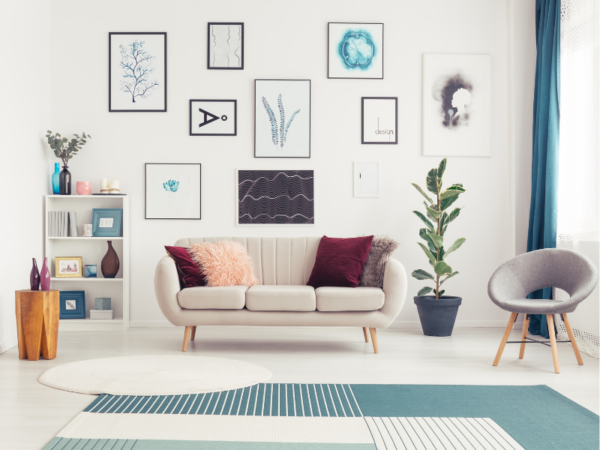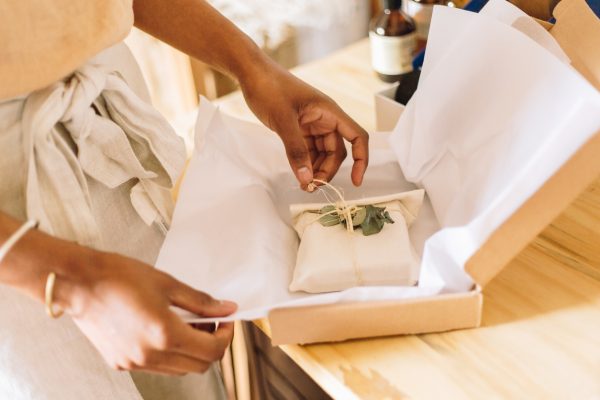For art lovers, the joy of visiting open studio events is to meet local artists and buy their work. For professional artists, open studios can be part of a solid marketing and networking strategy. And while they can take months to organize, it’s worth the time and effort to get the most sales and visits out of it (and they can even lead to commissions).
Open studios are brilliantly democratic — you can set one up without relying on a gallery to take you on and charge 50% of your income for the privilege. And most events are literally held in studios. This can mean anything to a professional studio complex to a garden shed, spare bedroom or corner of a kitchen counter.
Exhibiting in a working studio can be tricky, but we have a handy list of tips to get you ready for your open studio.

Clear your studio
You need to think about how you are going to turn your humble messy workspace into a gallery space with works enticingly displayed for sale. The trick is to make it an enjoyable visit, regardless of whether someone buys anything. Clear away works in progress and tools, unless you want to share some of your method of working with visitors. Whichever you choose, make sure anything sharp or that is likely to leave a stain (e.g., paint) is stored away.
Ensure good lighting
Ensure you have plenty of good light. If your studio is in a garden room, open the doors and windows and hang work where the light is at its best. Or you can set up supplementary lighting if needed. Avoid exhibiting in a dark or gloomy space.
Curate your work
Just because you are not hanging on the pristine white walls of a gallery, you should still create the feel of a gallery. Remember as you sell work, you can replace it. So don’t try and hang everything at once. Have additional work to hang in case a visitor is looking for something slightly different.
Give people something to go home with
Even if they haven’t bought an artwork (yet!), have a simple printed catalog available. People may want to go home and think about it.
Consider opening up your garden and offering refreshments. Larger open studios will offer a range of add-ons. This might include an open garden (if your skills run to horticulture) and serving refreshments for a donation to a good cause.
You might also consider offering masterclass or workshop events that people can sign up for. Don’t be afraid to charge people for these classes.

Joining or planning an open studio event
Although an artist can have an open studio event whenever they like, it can be useful to join forces with other artists and set up a open studio trail. Some open studios boast as many as 800 artists and combine the power of marketing and promotion. There might be signage and logos you can use as well as becoming part of a map.
Start with social media and look for existing groups online. In the UK, you can head to https://www.open-studios.org.uk/ to find open studios. Some are entirely geographical, but some might focus on a wider area in a specific medium.
A good open studio event should combine the power of joint marketing and year-round peer support. It is normal for an open studio event to charge a small fee for administration costs — but remember you get to keep 100% of your sales.
If there are none happening in your area, plan your own. Invite artists in the surrounding area to take part, The events are best held over several days and you will need a map (online or printed) that gives details on where to go. Ask local galleries if they would like to get involved and get them to sponsor any costs associated with the publicity.
A few more things to consider when organizing your open studio
- Make sure all the work is for sale, and clearly mark it as such with a price and any other information.
- Consider climate. Is your studio freezing in winter and hot in summer? Organize your show for spring or autumn!
- Vary your work by price and size. Start with small prints or stoneware for under $20 and increase gradually to large paintings, ceramics or sculptures. The aim of an open studio is to sell on the day, but you might end up selling larger pieces later on.
- Offer regular open hours and stick to them. Better to be open for a shorter period than to have people turn up and find you closed. Out to lunch? Visitors probably won’t come back and will tell friends their experience.
- Work out how payment will be taken. Card payment apps are really common or you might want people to pay by cash or check.
- Collection. Will people take the work straight away or collect it at a later date? If you can leave up any work that has sold (marked as sold), then do so. It’s human nature to want what other people have!
- Packaging. Make sure you have cardboard tubes if you are selling prints. If you are selling framed prints you will need bubble wrap and paper. Think ahead and make sure you have what you need for your type of work. You will also need to leave some space to package up work.

Don’t have a studio to open?
If your studio is in your house and difficult to open to the public, consider displaying work in a pop-up gallery-room space in a different room of your house. Aim for a space accessed directly from your front door. You might need to move furniture or accessories out of the way and put work up on the wall of your living room.
You don’t need to redecorate or empty the room, but make it accessible and clear clutter and anything valuable.
If that doesn’t appeal, consider joining forces with some artists and rent out a space on a short lease to show your work.







